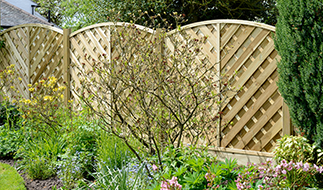What Are the Best Joints for a Wooden Gate?
- Gates
- Railings
- Fencing
- Accessories
& Fitting- Sheds
& Storage- Garden Structures
- Design
& StyleMetal Gates & Railings- Info
& Help2023-06-05
Here at Garden Gates Direct, we understand the importance of choosing the right joints for your gate. Properly constructed joints not only enhance the overall aesthetics but also ensure the gate's strength, durability, and longevity. In this guide, we will explore the best joints for wooden gates, considering both their functional and visual aspects.
Whether you're a DIY enthusiast or a professional woodworker, this guide will provide you with valuable insights to ensure the durability and functionality of your gate. So, what are the best joints for a wooden gate? We’ve listed our suggestions and recommendations…

Mortise and Tenon Joint:
The mortise and tenon joint is a classic and widely used method for joining wooden gate components. It involves creating a rectangular slot (mortise) on one piece of wood that perfectly fits the protruding end (tenon) of another piece. This joint provides excellent strength and stability, making it a popular choice for gates. It also allows for easy disassembly if necessary.
Dovetail Joint:
The dovetail joint is renowned for its exceptional strength and durability. It involves interlocking wedge-shaped projections on one piece of wood into corresponding slots on another. This joint not only provides structural integrity but also adds a touch of elegance to your wooden gate. The dovetail joint is commonly used for heavy-duty gates or when a decorative feature is desired.
Halving Joint:
The halving joint is a simple yet effective method for joining wooden gate components. It involves cutting away half the thickness of each piece and overlapping them to create a flush joint. This joint is easy to make and provides good strength. It is commonly used for lighter gates and situations where a more discreet joint is preferred.
Bridle Joint:
The bridle joint is a versatile joint that offers both strength and aesthetic appeal. It involves cutting a mortise and tenon joint on both pieces of wood, allowing them to interlock at a right angle. This joint provides good resistance against twisting forces and is often used for constructing gates with diagonal bracing. Its visible interlocking design can also add a decorative element to your gate.
Scarf Joint:
The scarf joint is used when joining two pieces of wood end-to-end to create longer gate components. It involves cutting a tapered notch on each piece that interlocks when fitted together. This joint maximizes the contact area between the pieces, ensuring a strong bond. It is commonly used for creating longer gate rails or stiles.
Butt Joint:
The butt joint is the simplest and most basic joint used in woodworking. It involves joining two pieces of wood by butting their ends together. While butt joints are relatively easy to create, they may not provide the desired strength and durability for a wooden gate. It is recommended to reinforce butt joints with additional methods, such as using screws, dowels, or biscuits.
Selecting the best joints for a wooden gate is crucial to ensure its longevity, strength, and functionality. When it comes to selecting the best ones, there are several options to consider. The choice depends on factors such as the gate's design, intended use, desired aesthetics, and level of craftsmanship. At Garden Gates Direct, we take pride in offering a wide range of wooden gates with carefully crafted joints to suit your specific needs. Remember to choose a joint that not only provides structural integrity but also enhances the overall beauty of your gate. Feel free to explore our collection and create a stunning entrance to your garden!
- Railings



